Paris Hilton’s memoir blows her brand to bits
The cover may be as one-dimensional as the character that made her an icon of the late 90s and aughties. But there’s another side to Paris Hilton: an intolerably abused woman.
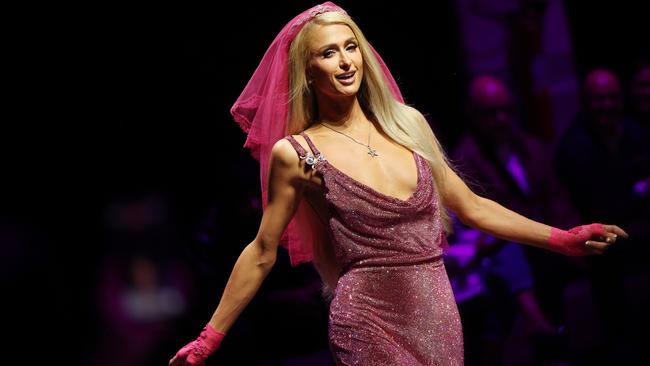
The shiny cover of Paris: The Memoir is in keeping with the one-dimensional character that made Paris Hilton a global icon of the late 1990s and aughties: improbably camp and stylised to the point of inhumanity.
A hotel heiress (estimated family fortune: $US14.2bn), reality TV star, and the ultimate Manhattan “It” Girl, Hilton was once everywhere, rail-thin and always laughing, an aggressively vacuous celebutante with artfully bleached hair and a sun-bed tan, in sunglasses and tiny slip dresses under which, in flashes, her diaphanous panties could be seen.
Expected by her family and milieu to be adorable, Hilton, who was recently diagnosed with ADHD, was “cute, precocious, and coy. I had to act silly and put on a baby-girl voice, which came naturally when I was nervous, because tension in your neck and shoulders actually tightens up your vocal apparatus and makes your voice go high and glottal.”
Delivered in a signature metallic squeak, Hilton’s catchphrase (“It’s hot!”) was a global phenomenon. Paps captured her clutching couture handbags stuffed with beribboned teacup dogs (“Diamond Baby”, “Tinkerbell”, “Crypto”, and so on) – a more conventional selection, perhaps, than the rest of her neo-Victorian menagerie (ferrets, snakes, chinchillas, a monkey, a baby goat, and Max, a rat with “weirdly large balls”).
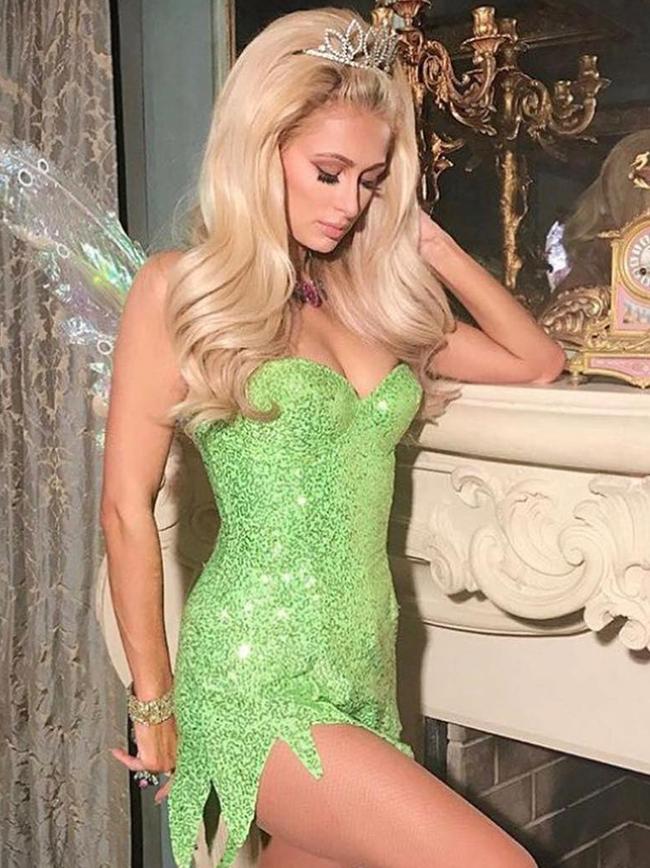
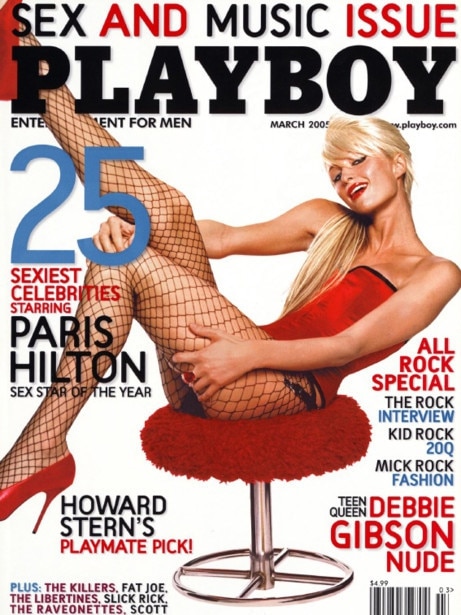
Seemingly, Hilton was famous for being famous, a parody of the pampered Beverly Hills princess, so stupid she once asked, on an episode of her show The Simple Life (2003-07), whether the American chain-store Walmart specialised in walls.
And yet there is another side to Hilton, one revealed only by numbers.
Hilton’s literary debut (Confessions of an Heiress) was a New York Times bestseller. Her eponymous debut studio album reached No.6 on the Billboard charts. She starred in a number of films and television shows – the most recent, This is Paris (2020), has had more than 75 million views – and she is said to be the world’s highest paid female DJ, earning up to a million per engagement. For three years running, she was in Forbes’ Celebrity 100 and has since masterminded 19 successful product lines.
The world she appears to embody – one of genetic grace and untouchable ease, in which a private jet “loaded with food from Mr. Chow’s” can be chartered when feeling homesick – clearly holds infinite appeal for the tired, the poor, the huddled masses yearning to breathe free.
In herself, Hilton is the American Dream.
Even the Rick Salomon calamity failed to dent the $US2.5-3bn her 20 perfumes have raked in (without her consent and under the title 1 Night in Paris, he sold the sex video he made with the then-teenage Hilton). “The tape was everywhere,” Hilton remembers, “and everyone was talking about it, shaking their heads, and saying I had no decency. Funny, no one mentioned the decency of people who watch creepy sex videos of teenage girls.”
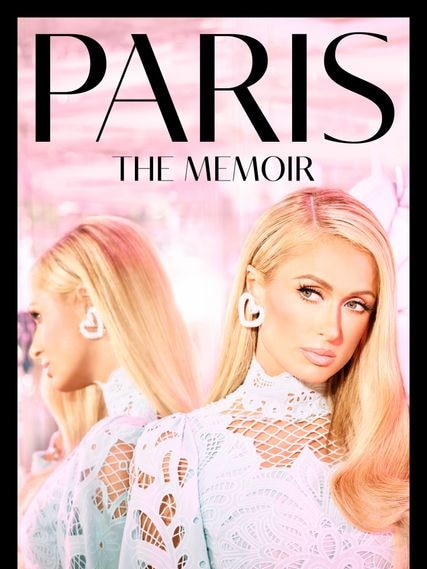
This is Paris revealed that the twee gestures and metallic squeak were affectations created to conform to her eye-wateringly profitable brand; Hilton’s unscripted manner is lucid and her voice gravelly, cultured, intolerant. At a music festival, she turns on a boyfriend with a chilling, bared eyetooth rage when he dares point out the truth – namely, that she doesn’t love him. Ensuring that he will be thrown out, she instructs security to cut off his AAA bracelets.
Paris: The Memoir goes on to blow her brand to bits.
Failing to conform to the elite standards on which her mother, a devout Catholic and former child actor, insisted, the under-age Hilton dressed downtown, slipped out to nightclubs, and said all the wrong things – namely, what she really thought.
Her parents, no longer able to cope, called in professionals: CEDU, an “emotional growth boarding school” that was, in essence, a house of torture for emotionally damaged adolescents.
Hilton writes, “Working-class parents mortgaged their homes and took second jobs to send their kids to CEDU. Wealthy parents came in with deep pockets, so CEDU aggressively courted them, especially celebrities. My parents were not alone. Michael Douglas, Clint Eastwood, Roseanne Barr, Barbara Walters, Montel Williams, Marie Osmond – the list goes on. CEDU and other facilities like it were a trending solution for the upper-class problem child. Programs expanded to take in kids as young as eight years old, staffed with loyal ‘graduates’ who were too damaged to make it out in the real world.”
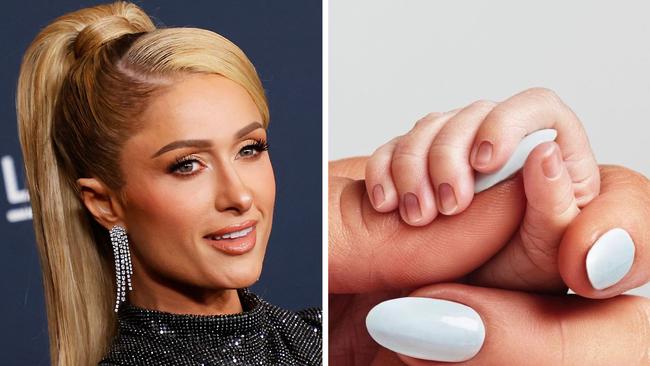
The abuses endured by CEDU students, a number of whom died, were unconscionable. Residential Treatment Programs: Concerns Regarding Abuse and Death in Certain Programs for Troubled Youth, a 2007 US federal government report, found thousands of allegations of abuse at CEDU and similar residential treatment programs both in America and American-owned operations abroad. CEDU founder Mel Wasserman was a disciple of Charles E Dederich, who believed that addiction, dysfunction, and homosexuality could be cured by force-feeding, compulsory psychiatric drugs, “verbal abuse, physical violence, forced abortions and vasectomies, and psychological torture”, including sleep deprivation, brainwashing, and challenges such as being strapped a roller coaster for 72 hours.
Turning in desperation and terror to others for help, Hilton was repeatedly betrayed. Her parents’ behaviour in particular is clearly something that she has yet to fully metabolise.
Paris: The Memoir stands as a testament to the courage, fortitude, intelligence and resourcefulness of an intolerably abused woman.
Leaving CEDU trusting no one, Hilton created a ridiculous persona to avoid experiencing what could easily have spiralled into psychosis, in the process financially insulating herself against further exploitation.
Antonella Gambotto-Burke’s latest book is Apple: Sex, Drugs, Motherhood and the Recovery of the Feminine.


To join the conversation, please log in. Don't have an account? Register
Join the conversation, you are commenting as Logout